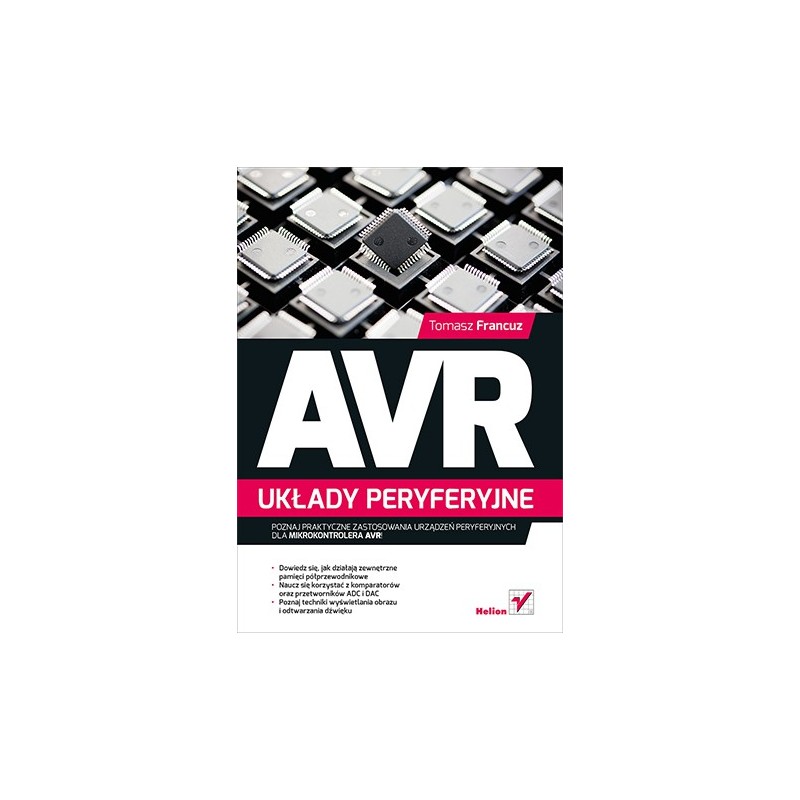



zł89.52 tax excl.
Tomasz Frenchman
Get to know the practical applications of peripherals for the AVR microcontroller! (only in Polish)
Find out how external semiconductor memories work
Learn to use comparators and ADC and DAC converters
Learn the techniques of image display and sound reproduction
Microcontrollers without peripherals are a niche developed mainly by electronics enthusiasts, for whom programming is an end in itself. Practical application of such gadgets is possible only after attaching storage, alphanumeric and graphic display, analog-digital and digital-to-analog converters and sensors. Thanks to these systems, AVR microcontrollers communicate with the world, collect information, store data and can serve us in everyday life as weather stations, digital players or heating controllers.
If you already have some knowledge about AVR microcontrollers and would like to enrich it with information about interesting applications of peripherals, reach for the one-of-a-kind AVR book. Peripheral systems. It is addressed to readers who want to broaden their practical programming skills of AVR microcontrollers, including microcontrollers from the XMEGA family. It is a natural continuation of the excellent AVR manual. Practical projects, targeted at less advanced programmers. The book also discusses elements of C language specific to AVR microcontrollers.
Combining C code and assembler and debugging the program
Support for external memory access interfaces
Creating and using a file system
Using ADC and DAC converters and comparators
Support for alphanumeric and graphic displays
Processing of sound and video data
Create practical solutions with AVR microcontrollers and peripheral circuits!
Table of Contents
Introduction (9)
Chapter 20. We release, or when delays are necessary (13)
Chapter 21. Combining C and Assembler Code (23)
Chapter 22. Alphanumeric LCD Displays (43)
Chapter 23. SPI and USART SPI interface (71)
Chapter 24. We build a filesystem (111)
Chapter 25. Even more memory, i.e. SD card, SDHC and company (151)
Chapter 26. Debugger (183)
Chapter 27. Analog-to-digital converter (221)
Chapter 28. Analog comparator (279)
Chapter 29. DAC (293)
Chapter 30. Monochrome graphic displays (309)
Chapter 31. Data files - how to add them to the project? (349)
Chapter 32. External memory bus (361)
Chapter 33. Generating a video image (391)
Chapter 34. Let the music play (439)
Chapter 35. Or maybe mp3? (495)
Chapter 36. Fusebits and lockbits (557)
Appendix A. List of chapters of the book "AVR: Practical Projects" (573) Index (575)
Andrzej Pawluczuk
Rafał Baranowski
Andrzej Pawluczuk
Rafał Baranowski
Marcin. Bonds
No product available!
Jarosław Doliński
Robert Wołgajew
Andrzej Pawluczuk
Andrzej Pawluczuk

Tomasz Frenchman
